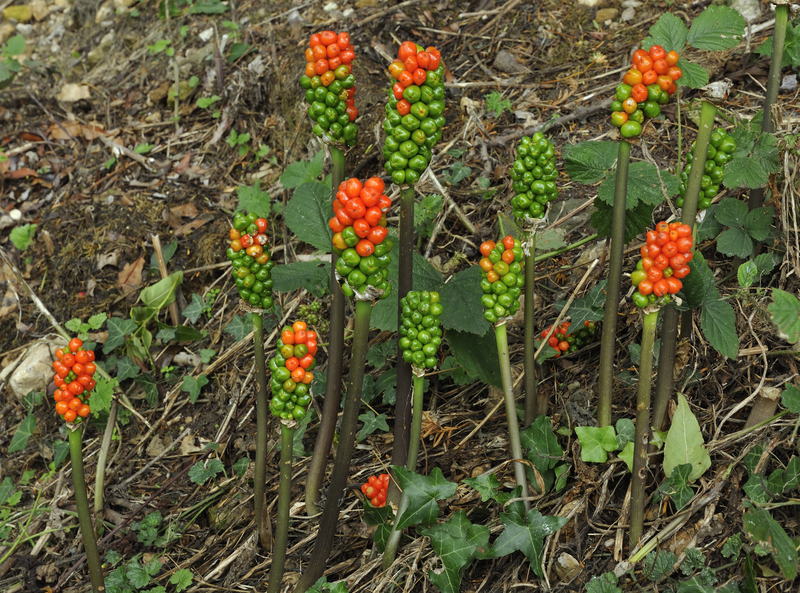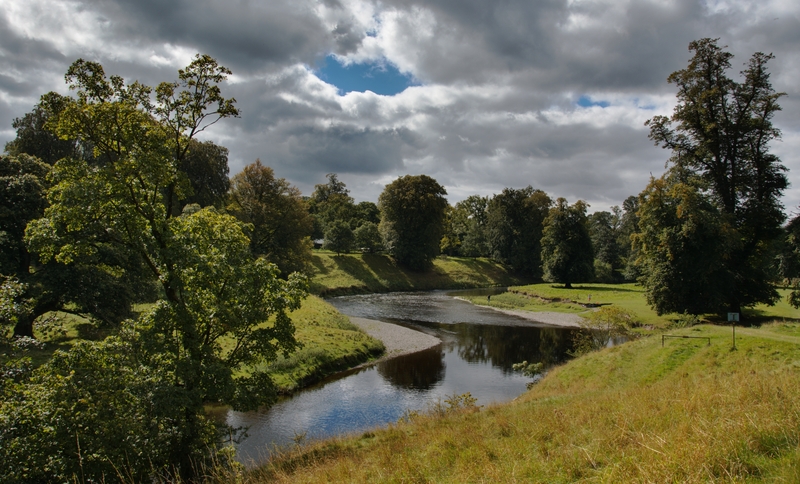Safe and Spectacular: Crafting Gardens Geared for Kids
Posted on 10/06/2025
Safe and Spectacular: Crafting Gardens Geared for Kids
Designing a garden for children does not just mean adding a few play features or colorful flowers; it is about creating a safe, engaging, and educational environment that nurtures their creativity, curiosity, and connection with nature. In this article, we'll share how to craft child-friendly gardens that are both safe and spectacular -- places where kids can play, learn, and grow. Whether you have a sprawling backyard or a modest courtyard, we'll guide you step-by-step to a safe kid's garden that delights the senses and sparks lifelong memories.
Why Design Child-Friendly Gardens?
Gardening is much more than a hobby; it's an immersive experience that benefits children in countless ways. The right garden space can become a sanctuary for play, discovery, and learning -- all while enhancing physical health, emotional well-being, and social skills.
- Encourages Outdoor Play: Reduces screen time and fosters imagination.
- Develops Physical Skills: Fosters gross and fine motor skills through digging, planting, and climbing.
- Promotes Cognitive Growth: Teaches kids about plants, ecosystems, weather, and sustainability.
- Supports Emotional Well-Being: Boosts mood, reduces stress, and enhances mindfulness.
Prioritizing Safety: The Key to Child-Centric Gardens
Child safety in the garden should always come first. Before you get creative with design and activities, be diligent with hazard assessment and prevention. Here are essential safety considerations for kid-safe gardens:
Remove Toxic Plants
- Familiarize yourself with common toxic plants such as oleander, foxglove, castor bean, and lily of the valley.
- Replace hazardous species with non-toxic, kid-friendly plants like sunflowers, marigolds, or strawberries.
- Teach your kids never to eat plants or berries they find in the garden unless approved by an adult.
Secure Boundaries and Fencing
- Install sturdy fences at least 4 feet high to keep children safely inside and unwanted animals out.
- Use self-closing and self-latching gates -- especially important for gardens near water or roads.
Avoid Sharp Edges and Hard Surfaces
- Opt for rounded paving stones, rubber matting, or lawn to cushion falls.
- Cap off any pointed stakes or corners on furniture and structures.
Water Features: Fun with Supervision
- All ponds, pools, or water barrels should have secure, childproof covers.
- Consider splash pads, shallow pebble streams, or misting features as safer alternatives.
Tool Storage and Chemical Lock-up
- Keep garden tools, fertilizers, and insecticides locked away and out of reach.
- Prefer organic or non-toxic gardening solutions.
Visibility is Vital
- Design play zones within easy visual supervision from the house or patio.
Designing a Spectacular Kid-Friendly Garden
Creating a spectacular children's garden is all about inspiring exploration, wonder, and hands-on engagement. Let's break down the best practices to make your garden irresistible and developmentally rich for kids of all ages.
Color, Texture, and Scent: A Sensory Wonderland
Children thrive in vibrant spaces filled with sensory stimulation. Design your kids' garden with:
- Bright flowers (zinnias, snapdragons, nasturtiums) for visual appeal.
- Soft, touchable plants like lamb's ear or ornamental grasses.
- Fragrant herbs (mint, lavender, basil) for aromatic exploration.
- Edible fruit bushes (blueberries, raspberries) that encourage snacking straight from the bush.
Zones for Active Play
Not all play needs to happen in plastic playhouses! Incorporate natural features like:
- Willow tunnels or arches for hiding and imaginative games.
- Stepping stones and log balance beams to develop balance and coordination.
- Sand or mud kitchens for messy, creative fun.
- Tree stumps for jumping, sitting, or arranging in patterns.
Tip: Use rubber mulch or bark chips to cushion falls and prevent muddy messes.
Learning Through Gardening Activities
- Grow-your-own vegetable patches: Quick-growing crops like radishes, lettuce, and carrots give kids rewarding results.
- Seed sowing and labeling: Encourage kids to decorate plant markers and track plant growth.
- Wildlife observation: Install birdhouses, bug hotels, or butterfly-friendly plants to foster a love for nature.
Cozy Corners and Hideaways
- Teepees made from bamboo and fabric or living willow dens provide quiet retreats for reading and daydreaming.
- Plant sunflowers, beans, or morning glories on trellises to create living playhouses.
Art and Creativity in the Garden
- Outdoor chalkboards on sheds or fences for drawing.
- Stepping stones made from painted cement tiles.
- Decorating flowerpots, scarecrows, or wind chimes to personalize the garden space.
Choosing the Best Plants for Safe Kids' Gardens
Plants are at the heart of any child-centered garden. Pick species that are not only safe but also engaging to the senses. Here are top suggestions:
Edible Plants
- Strawberries, blueberries, and raspberries (train them up trellises for easy picking).
- Cherry tomatoes, snap peas, and bush beans.
- Herbs like basil, parsley, mint, and chives (easy to grow and fun to taste).
Flowering Plants
- Sunflowers (tall, cheerful, and easy to grow from seed).
- Calendula, marigolds, and pansies (safe and colorful, plus some are edible).
- Snapdragons, cosmos, zinnias, and nasturtiums.
Texture and Fragrance
- Lamb's ear, silver sage, ornamental grasses.
- Lavender, thyme, lemon balm.
Plants to Avoid
- Oleander, foxglove, lily of the valley, castor bean, monkshood, and yew.
- Any plant with thorny, spiky, or toxic properties.
Low-Maintenance Gardening for Busy Families
A low-maintenance kid's garden ensures that the focus stays on fun, not endless chores. Here's how to keep things simple:
- Mulch garden beds to suppress weeds and retain moisture.
- Install a drip irrigation system for easy watering.
- Choose perennial flowers and shrubs for years of easy color.
- Encourage children to help with age-appropriate chores: watering, weeding, harvesting, and sweeping paths.
Making Gardens Inclusive: Accessible Spaces for All Kids
Every child deserves to enjoy the joy of gardening, regardless of abilities. When you design inclusive children's gardens, consider:
- Raised beds at different heights for comfortable access by wheelchair users or younger children.
- Wide, smooth garden paths for strollers and mobility devices.
- Adapted tools with ergonomic grips and lightweight materials.
- Plenty of sensory elements: wind chimes, water features, and fragrant plants for children with visual impairments.
Gardening All Year: Seasonal Activities for Children
A spectacular children's garden evolves with the seasons, giving families a reason to explore outdoors all year round. Some ideas:
- Spring: Start seeds, dig beds, hunt for worms and bugs.
- Summer: Harvest vegetables, make daisy chains, set up water play.
- Autumn: Collect colorful leaves, plant bulbs and garlic, carve pumpkins.
- Winter: Feed birds, make ice art, spot animal tracks in frost or snow.
Creative Themes for Kids' Gardens
Themed gardens for children bring extra magic to the outdoors. Try one of these creative concepts:
- Dinosaur dig parks: Bury "fossils" in a sand pit and plant ferns for a prehistoric vibe.
- Fairy or gnome gardens: Use miniature houses and pathways among flowers and moss.
- Pizza gardens: Grow tomatoes, basil, oregano, and peppers in a circular "pizza" bed.
- Pollinator paradise: Choose butterfly and bee-attracting plants with a colorful mural or observation post.
Top Tips for Involving Kids in Their Garden
- Let kids lead: Involve them in planning, design, and plant choices.
- Give them ownership: Set aside a "kid zone" or their own raised bed for free creative planting.
- Make tasks fun and achievable: Use child-sized tools and break jobs into small steps.
- Celebrate successes: Mark achievements with photos, garden journals, or a harvest feast.
By giving kids responsibility and encouragement, you'll build skills and independence -- and a genuine love for the outdoors.
The Benefits of Safe and Spectacular Kids' Gardens
Children's gardens designed with care and creativity become more than play zones -- they're living classrooms, laboratories, and wonderlands.
- They foster resilience by encouraging trial, error, and problem-solving.
- Build strong family bonds through shared projects and outdoor time.
- Promote lifelong environmental stewardship and healthy living habits.
- Create memories and traditions that carry into adulthood.
With a little planning and imagination, gardens geared for kids can be safe, rewarding, and downright spectacular. Whether your outdoor space is a window box or a wild meadow, it's always possible to nurture a love of nature--and each other--that lasts a lifetime.
Ready to Get Growing?
Start small or dream big -- your safe children's garden adventure begins with a single seed. Share your story, send us your questions, and join a worldwide community of families celebrating the magic of growing together!



